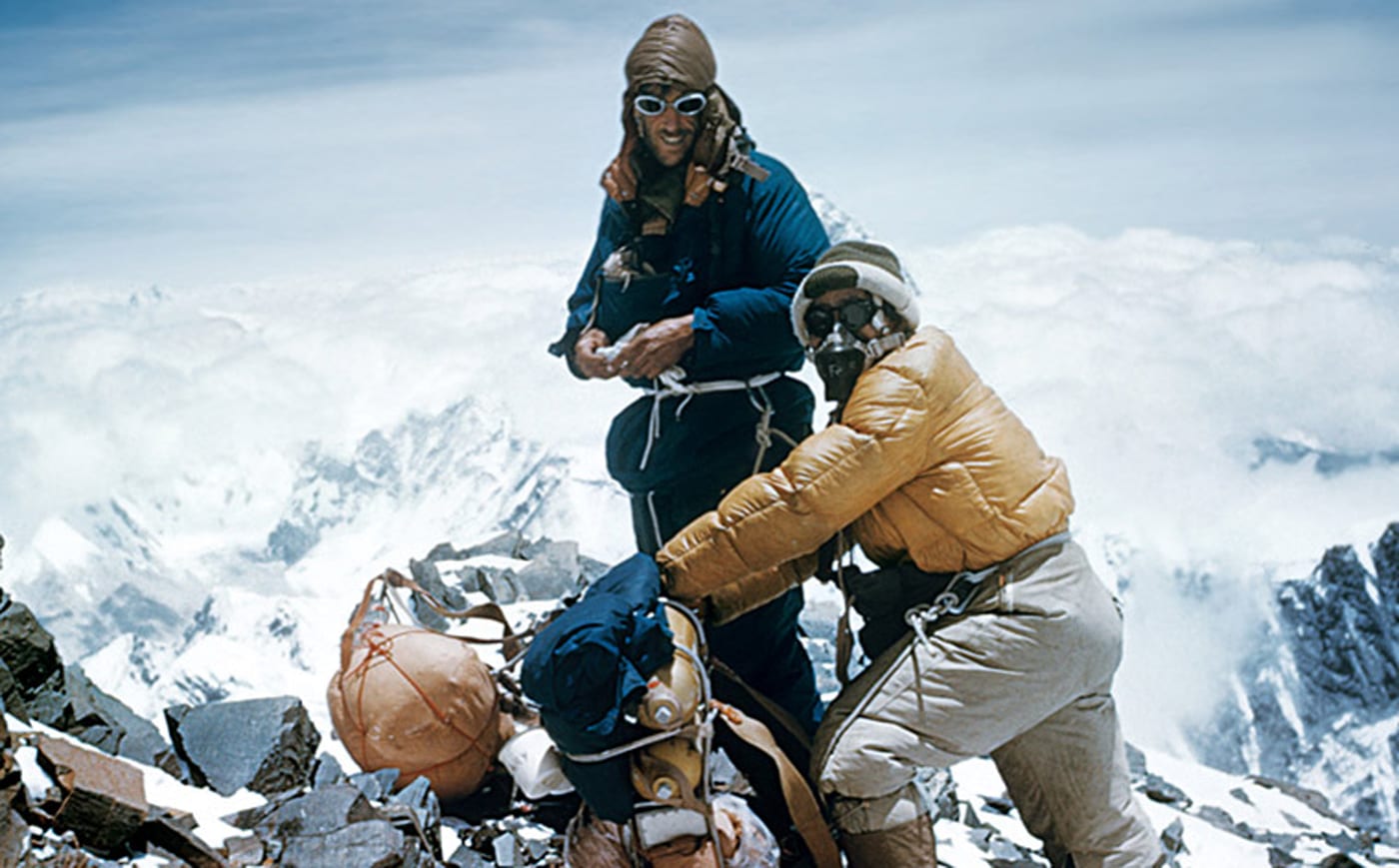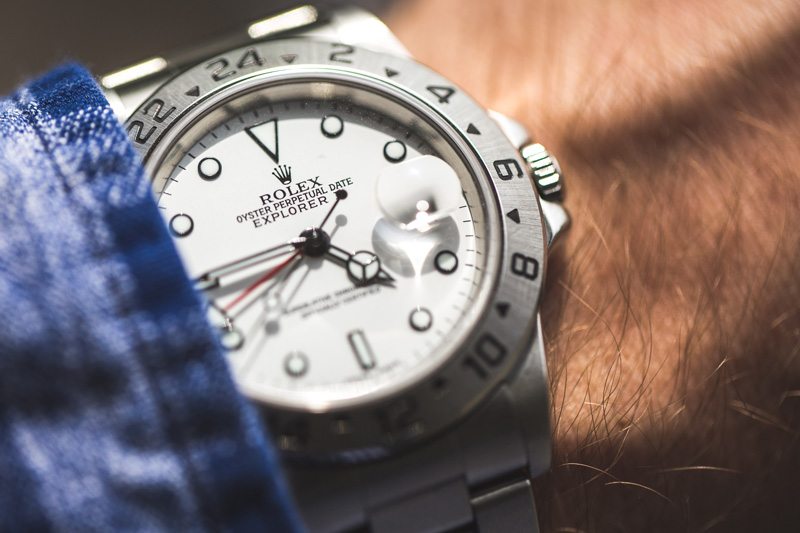Comparing the Rolex Explorer vs. Explorer II
Rolex developed the Explorer family of watches with thrill-seekers in mind. They began the collection with the Explorer I in 1953. Two decades later, Rolex reimagined the line with the debut of the Explorer II. Today, the two models continue to co-exist in the Rolex catalog. Comparing the Explorer I vs. Explorer II will help you decide which model is best for you. At the end of the day, the Rolex Explorer I and Rolex Explorer II were designed for adventure, and they’re some of Rolex’s most iconic models. We take a look at their differences.
History of the Rolex Explorer
In 1953, Sir Edmund Hillary and Tenzing Norgay completed the first successful ascent of Mt. Everest. Rolex sponsored the expedition and supplied Hillary with a watch to accompany him. This watch was a prototype of what would become the Rolex Explorer. The first official watch inscribed with the Explorer name was the Reference 6350, launched later in 1953. Throughout the 1950s, Rolex advertisements for the watch featured climbers using their Explorer during their ascent up a mountain or paying tribute to the Explorer for assisting them on their journey.

The first official watch inscribed with the Explorer name was the Ref. 6350, launched in 1953. Six years later, it was replaced by the Ref. 6610, which had a more flattened caseback than the previous model. One of its most notable variations is the Ref. 1016, which was in production for an impressive 26 years, from 1963 to 1989.

Rolex Explorer I Models: (left to right) 1016, 14270, 214270
Evolution of the Rolex Explorer and Explorer II Watches
In 1971, Rolex debuted the first Explorer II, Ref. 1655. It was specifically designed with speleologists and polar explorers in mind. Because it’s difficult to distinguish between day and night in those places, the Explorer II features a fourth hand and a 24-hour bezel. This additional hand–traditionally orange–has become a trademark of the Explorer II.

Rolex Explorer II Models: (left to right) 1655, 16550, 216570, 16570
The second edition of the Explorer II, Ref. 16550, debuted in 1985. However, this variation is often referred to as a transitional model since another edition was released just four years later, the Ref. 16570.
Differences Between the Explorer I and Explorer II
Six years after the Ref. 6350’s initial debut, Rolex replaced it with the Reference 6610. Most notably, it featured a more flattened caseback than the previous model. One of its most important variations is the Reference 1016. It remained in production for an impressive 26 years, from 1963 to 1989.
In 1971, Rolex made a significant change to the collection with the launch of the Explorer II, Reference 1655. Rolex introduced a number of aesthetic and technical updates between the Explorer I vs. Explorer II. They specifically designed the Explorer II with speleologists and polar explorers in mind. Because it’s difficult to distinguish between day and night in those places, the Explorer II features a fourth hand and a 24-hour bezel. This additional hand is traditionally orange or red and has become a trademark of the Explorer II. Together, these elements enable the wearer to feel the hour indicators by hand with the 24-hour hand designating local time in day or night. All in all, this combination allows for optimal usability in any conditions, particularly lowlight. In addition, the 24-hour hand can also serve to indicate North. These new technical capabilities along with the new movement necessitated a new design.
The second edition of the Explorer II, the Reference 16550, debuted in 1985. However, many consider this variation a transitional model since Rolex released another edition just four years later, the Reference 16570. Ultimately, it took a couple decades for the Explorer II to gain popularity among a wider scope of people. At first, many fans of the Explorer I found the Explorer II to be too much of a departure from the original. However, the Explorer II garnered attention in the early 1990s when legendary actor and racer Steve McQueen wore the model. After that, fans have dubbed models of the era Steve McQueen Explorers.
Into the new millennium, Rolex has continued to develop the Explorer II. 2011 marked yet another new era for the Explorer collection. At Baselworld that year, Rolex unveiled the latest addition to the line. It debuted an all-new movement for the brand, and with that, a new design. The model’s case was larger, measuring 42mm. However, this change isn’t all too surprising with the upgraded movement. What was most striking about the new model were the aesthetic changes to the dial. The hour markers were even bigger and the hands were noticeably fat. Some called it the “maxi-est” maxi dial the brand had ever created. In typical Rolex fashion, this new generation quickly garnered a nickname. It was then that the “Fat Hands” was born. Later, in 2016, they debuted an all-new Chromalight display in the collection. The brand’s exclusive material emits a blue glow, which helps to further enhance the readability of the model in lowlight. In addition, the line has achieved Superlative Chronometer Certification.

Differences Between the Rolex Explorer vs. Explorer II
There are many similarities between the Explorer I and Explorer II. Both are self-winding, waterproof up to 330 feet, and only offered in stainless steel. However, there are also several differences between the Explorer I vs. Explorer II that make them appeal to different wearers. The Explorer I has a more minimalist aesthetic. It’s a classic Rolex with a more understated appearance and modest size. The slim, simple, and clean lines of the Explorer I make it a timeless watch for an expedition or a day at the office. On the other hand, the Explorer II has a sportier look and feel as well as enhanced capabilities. It features a larger case, sapphire crystal, and upgraded movement. Each of the details of the Explorer II are bigger and bolder, from the lugs to the dial markers. In addition, the Explorer II showcases Rolex’s latest technical innovations. The more rugged appearance and utility of the Explorer II makes it a more durable and practical watch for adventurers.
Editor’s Note: We published this article on April 19, 2013. We have updated it for clarity on 1/4/2021.
Image Credits: Header,2-9; Crown & Caliber. 1; via Rolex Magazine.
Get More Articles Like This in Your Inbox
We're constantly creating great content like this. So, why not get it delivered directly to your inbox? By subscribing you agree to our Privacy Policy but you can unsubscribe at any time.







hamish | April 21, 2013
|
was it not also true that Hillary also carried a British made Smiths Deluxe too? I seem to remember seeing an add boasting such
Hamilton Powell | April 22, 2013
|
You are correct! Hillary wore a British made Smiths, as they sponsored many of the mountain climbing events. We have expanded a little more on that subject in our paragraph above.